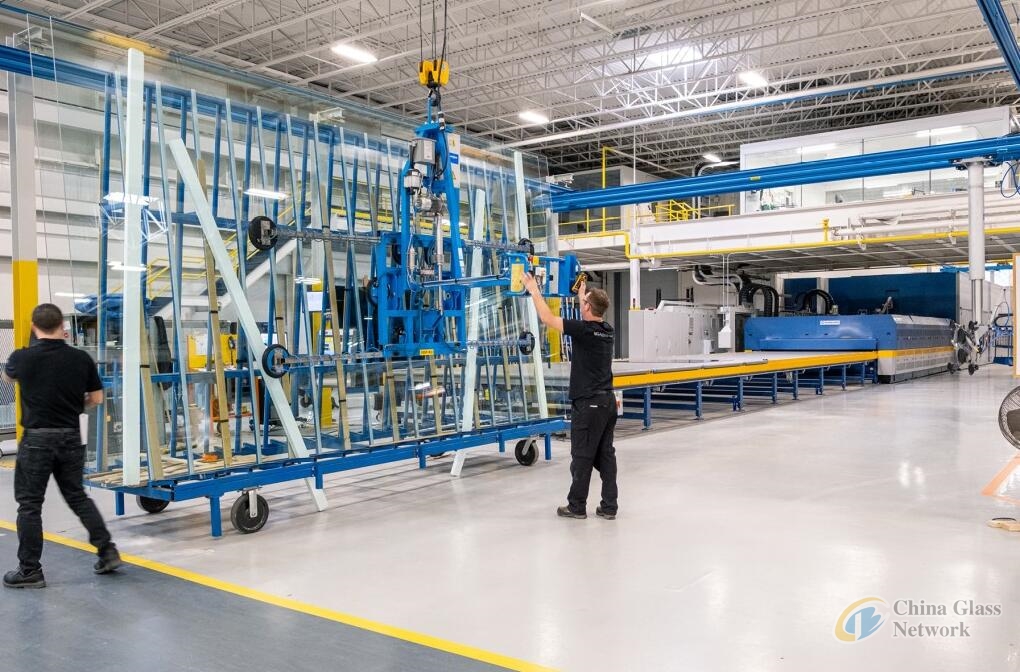Post Time:Mar 01,2023Classify:Industry NewsView:1224
Architects and designers agree that bigger is better. As a result, the glass industry has had to adapt to design trends toward more glass and larger lites. This transition comes as leaders see the aesthetic appeal and benefits of glass.
To meet those needs, glass companies must be prepared to handle, store and move increasingly larger lites. Connor O’Neill, architectural sales representative for Viracon and a panelist at a session on large-sized glass at the recent Glass Expo Rocky Mountain™ ’23 in Denver, told attendees that proper warehouse space and planning are vital to working with jumbo glass.

Machinery is critical to moving jumbo glass throughout the warehouse and onto trucks. Photo courtesy of AGNORA.
Despite builders’ desires to incorporate larger glass lites, some glass companies might hesitate to dive into larger glass. That’s not the case for fabricators such as AGNORA, which produces custom architectural glass up to 130 inches by 300 inches.
The Ontario-based fabricator has worked with glass up to 300 inches since 2010. It also has more than 225,000 square feet of production space and works with a reliable third-party transport company that understands how to move jumbo glass across North America.
“We are jumbo glass to begin with,” says Adam Mitchell, AGNORA’s marking manager. “How we transport, ship and manipulate things has always centered around that size. Our entire facility was designed around jumbo glass from the ground up.”
Mitchell explains that reliability is crucial to shipping jumbo glass. Logistics companies must have a good safety history, have worked in the construction and glass industry before, and have proper trailers, such as a specialty double drop trailer specifically for hauling 300-inch glass.
Moving Jumbo Glass
Machinery is critical to moving jumbo glass throughout the warehouse and onto trucks. To achieve that, fabricators install permanent cranes in the facility to move the glass safely and efficiently.
“At [AGNORA’s] crating department, we have a series of cranes that we can use to unload and rack the glass and then load the glass into a crate,” says Mitchell. “Once that glass is crated, it is put on the truck using the same crane system.”
A well-designed crate is also important to ensure the glass’s safety during transportation. Crating is key, says Mitchell. He cites a story where one of their glass lites was hit on a high-value project site, but thanks to the craftsmanship of the crate, nothing happened to the glass.
“The glass did not break because of the crate’s durability and craftsmanship,” he says.
Proper Equipment
Mitchell says the lack of equipment to move up to 2,000 pounds can be problematic. Proper planning and the necessary lifting equipment should be first on the minds of companies interested in working with jumbo glass.
“It’s also not just about the size and weight of the sheet,” he says. “It’s how do you turn it around? Do you have the space to move it the right way?”
Chip Olson, national sales manager of Quattrolifts USA, says that working with jumbo glass is easy if workers are given the proper tools.
“If you can give your manpower the right tools, they will be happy when they show up,” he said.
Source: usgnnAuthor: shangyi